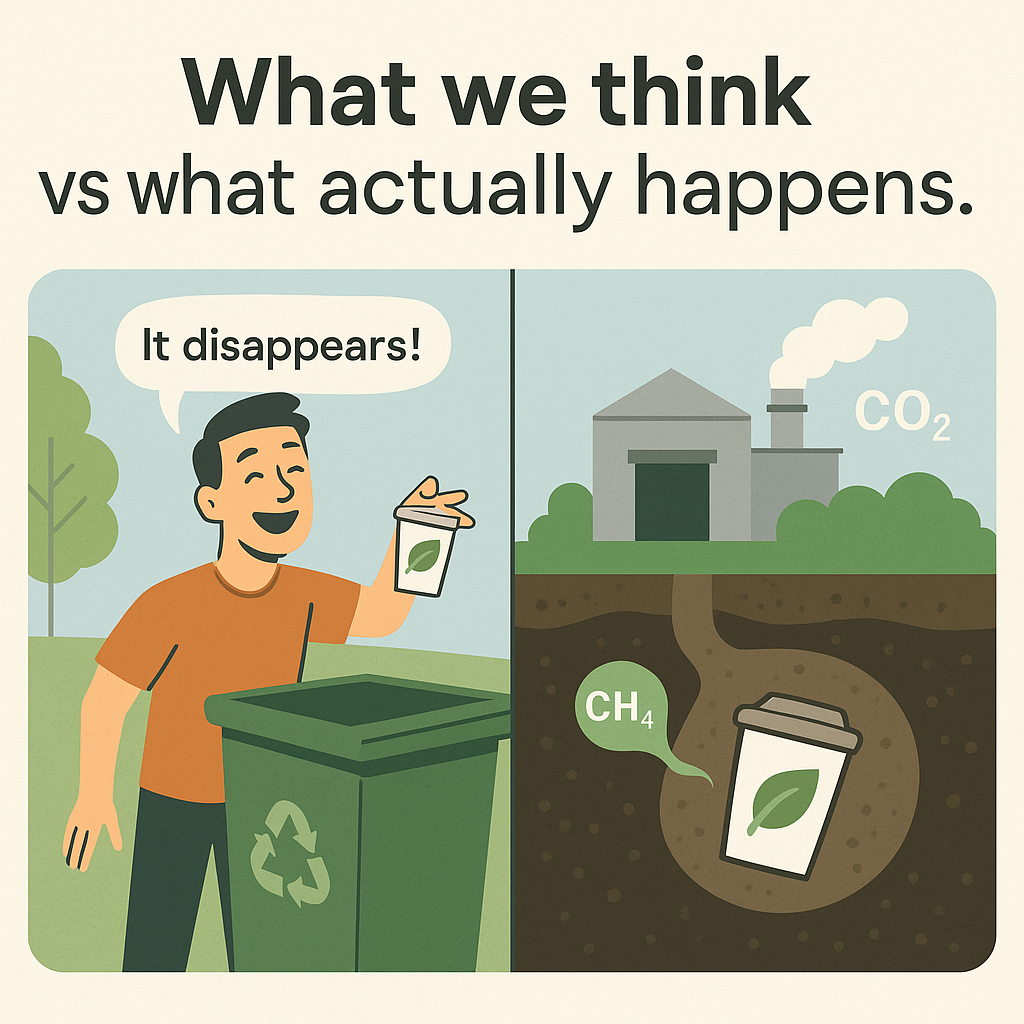Today’s Packaging Debate: Are Compostables Really the Solution?
What people think happens to compostable cups vs. The emissions reality when they aren’t properly composted
When we hear the word “compostable,” it often comes with a halo: green, clean, and good for the planet. But the truth, like most things in sustainability, is more complex.
According to New Zealand’s Ministry for the Environment, most compostable packaging doesn't break down in home compost bins or landfills. In fact, when compostables end up in landfill (as most still do), they can produce methane gas during decomposition. Methane is a powerful greenhouse gas that traps 84 times more heat than carbon dioxide over a 20-year period. That means in the short term, methane contributes far more aggressively to global warming, making its release from landfilled organics a major climate concern.
Bioplastics like PLA can be a little tricky as they are often seen as eco-friendly, but EU compostability standards reveal a surprising tradeoff. Under EN 13432, compostable packaging must biodegrade so that at least 90% of its organic carbon is converted into CO₂ within six months in an industrial composting facility. This isn’t optional. It’s what ensures no microplastic fragments remain in the finished compost. But it also means these products are intentionally designed to emit CO₂ to be considered “safe.” So even in a best-case scenario, compostables come with a built-in carbon footprint. The aim is to reduce soil pollution, but the cost is higher greenhouse gas emissions, especially when, as is often the case, compostables never reach the right facility.
It's important to note that PLA isn’t inherently bad, it’s just one material in a system that needs the right conditions, infrastructure, and decisions to make its benefits real.
Take bioplastics like PLA. A 2023 study on PLA microplastics found that these materials, even when labelled compostable, can degrade into microplastic particles that harm aquatic life, European Perch in this case, causing behavioral and physiological changes. And yet, many consumers still believe compostables “disappear” harmlessly.
A life cycle analysis by the University of St. Thomas compared the environmental impact of single-use cups (PLA, PET, aluminum) with reusables made from stainless steel and polypropylene (PP).
Stainless steel cups, while energy-intensive to produce, begin to outperform single-use options after just six uses, thanks to their durability and long lifespan. In contrast, PP cups have a much lower production footprint, but need to be reused around 500 times to match or beat single-use performance across indicators like emissions and landfill waste.
That 500-use threshold might seem high and in theory, it's achievable in closed-loop systems like offices, campuses, or stadiums. But in practice, we don’t yet have enough data to confirm how often PP cups actually survive that long in the real world.
Bottom line? Reuse works best when the system supports it. Choose the material that matches your habits, infrastructure, and durability needs. Reusables need wash systems and behaviour change. No small feat. But doing nothing, or defaulting to compostables without a system, creates its own harm. That’s why regulatory bodies like the Australian Competition and Consumer Commission (ACCC) now caution against vague claims like “eco” or “planet-safe.”
For decision-makers: Don’t just ask “Is it compostable?” Ask:
- Will it actually be composted?
- Is it better than reuse in this context?
- What’s our full system responsibility?
Need help navigating green claims, reuse systems or packaging choices?
Reach out or explore the Business Sustainability First Principles community -> Sign up now!
Watch the deep-dive explainer: youtube
